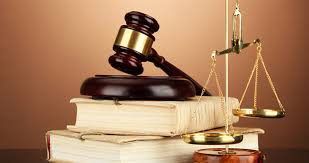Marriage Act 1949 was the extremely complicated law relating to the formalities of marriage could be found only by reference to more than 40 statutes, quite apart from the case law which had grown up as the result of their judicial interpretation. The purpose of the Marriage Act of that year was to consolidate these enactments in one Act. As a result, nearly twenty of these statutes were repealed in and most of the rest were repealed in part. Few changes were made in the substantive law: the only notable exception was that the Attorney- General’s power to sue for the forfeiture Of property was taken away—a power which the married women’s property legislation had, in any case, already made virtually obsolete.
The Act of 1949 has since been amended by a series of Acts, two of which deserve special mention. The Acts of 1836 and 1898 had left those marrying according to the rites of the Church of England one privilege not shared by others: the power to marry in a private building on the authority ofa special licence. This anomaly has now been removed. The Marriage (Registrar General’s Licence) Act 1970 permits the Registrar General to issue a licence authorising the solemnization of a marriage anywhere if one of the parties is suffering from a serious illness from which he is not expected to recover and cannot be moved to a register Office or registered building. The Marriage Act 1983 has gone further and enables a house-bound or detained person to be married in the place where he is confined or detained on the authority of a superintendent registrar’s certificate. A change in the law of much wider application was the reduction of the age of majority to 18 by the Family Law.
Reform Act 1969, as a result Of which anyone over this age may now marry without the consent of any other person. I i In addition to laying down the legal requirements relating to the preliminaries to marriage and the place and method of solemnization, the Marriage Acts also regulate the registration of marriages. The details of the relevant law are far too complex to be considered here, I s but it must be emphasized that proper registration is of extreme importance not only to the parties themselves but also to others (including} government departments) who may wish to have evidence of the marriage.
The above outline will have made it clear that the principles underlying the modern law cannot be understood without a knowledge of their historical origin. The law is now hopelessly’ out of date: proposals for reform will be considered later. 2 It will be convenient to consider the modern law under two heads: (a) where the marriage is solemnized according to the rites of the Church of England, and (b) where it is solemnized in some other way. Before doing this. however, we must consider the question of consent to the marriage of a person under the age of 18. Finally it will be necessary to discuss marriages in naval, military and air force chapels.

